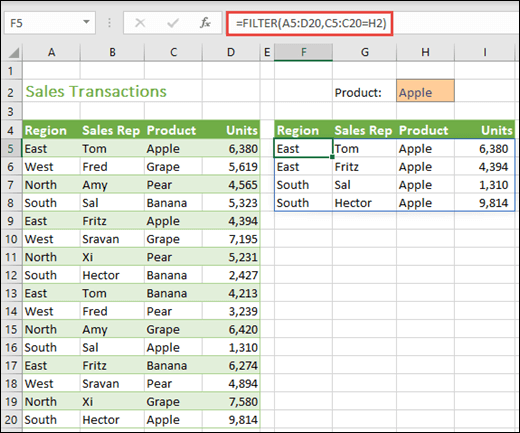

On the Home tab, click Format as Table, and then pick Format as Table. When you put your data in a table, filtering controls are added to the table headers automatically. For example, if the column contains three values stored as number and four as text, the Text Filters command is displayed. If there is a mix of data types, the command that is displayed is the data type that occurs the most. Values returned by a formula have changed and the worksheet has been recalculated.įor best results, do not mix data types, such as text and number, or number and date in the same column, because only one type of filter command is available for each column. When you reapply a filter, different results appear for the following reasons:ĭata has been added, modified, or deleted to the range of cells or table column. When you hover over the heading of a filtered column, a screen tip displays the filter applied to that column, such as "Equals a red cell color" or "Larger than 150". When you hover over the heading of a column with filtering enabled but not applied, a screen tip displays "(Showing All)".Ī Filter button means that a filter is applied. To determine if a filter is applied, note the icon in the column heading:Ī drop-down arrow means that filtering is enabled but not applied. For example, you can filter by a list of numbers, or a criteria, but not by both you can filter by icon or by a custom filter, but not by both. Each of these filter types is mutually exclusive for each range of cells or column table. Range("A2:A" & lastRow1).Using AutoFilter, you can create two types of filters: by a list value or by criteria. AutoFilter field:=lastCol1, Criteria1:=1 'set autofilter on rng1 and filter to show the no-matches FormulaArray = "=N(ISNA(MATCH(" & ws1Name & "!" & rng1.Address & _ With ws1.Range(ws1.Cells(2, lastCol1), ws1.Cells(lastRow1, lastCol1)) 'add column of match values one column to the right of last data column Sub MatchFilterAndHide2()Īpplication.Calculation = xlCalculationManual Run times against these data averaged under two minutes.
#Mac excel 2016 filter for specific region code#
The randomly generated 10-character code and match values were constructed so that 20 percent of the Sheet1 column A values were non-matches. I tested the procedure with a Sheet1 dataset of 300,000 rows of code values in column A and random numeric data in columns B and C, with just over 1,000 match values in Sheet2.
#Mac excel 2016 filter for specific region plus#
You will note that it assumes that Sheet1 has a set of values in column A plus an unspecified number of data columns and that Sheet2 has only a a set of values in column A against which the Sheet1 column A values are matched. The following code takes a somewhat different approach to your problem. It is processing now my excel file, however it is very slow. How can i do it? could you please suggest the fastest way? any help would be appreciated, thanks in advance.Īfter searching a lot i made my own macro Sub hide() I know that it will be very slow as everytime i need to compare cellvalue with another 1000 cell values, and i have 300 000 rows. i mean i need to loop throw all rows in first sheet and if first cell value does not match any cell of first column of the second sheet then hide this row. i need to write a macro that hides rows in first sheet based on the second sheet. I have an excel file with about 300000 rows in first sheet where there are item identifiers in first column(they might be several which has the same value), and about 1000 rows in second sheet(first column also contains item identifiers but they are unique here).


 0 kommentar(er)
0 kommentar(er)
